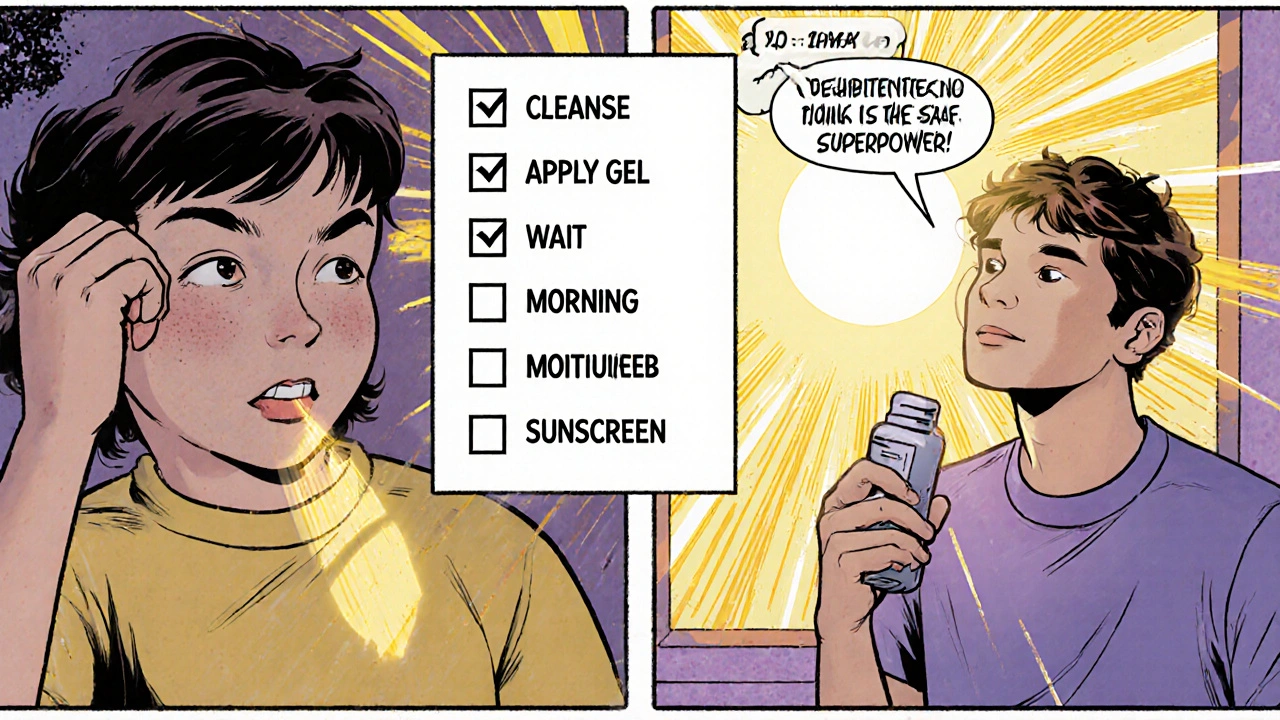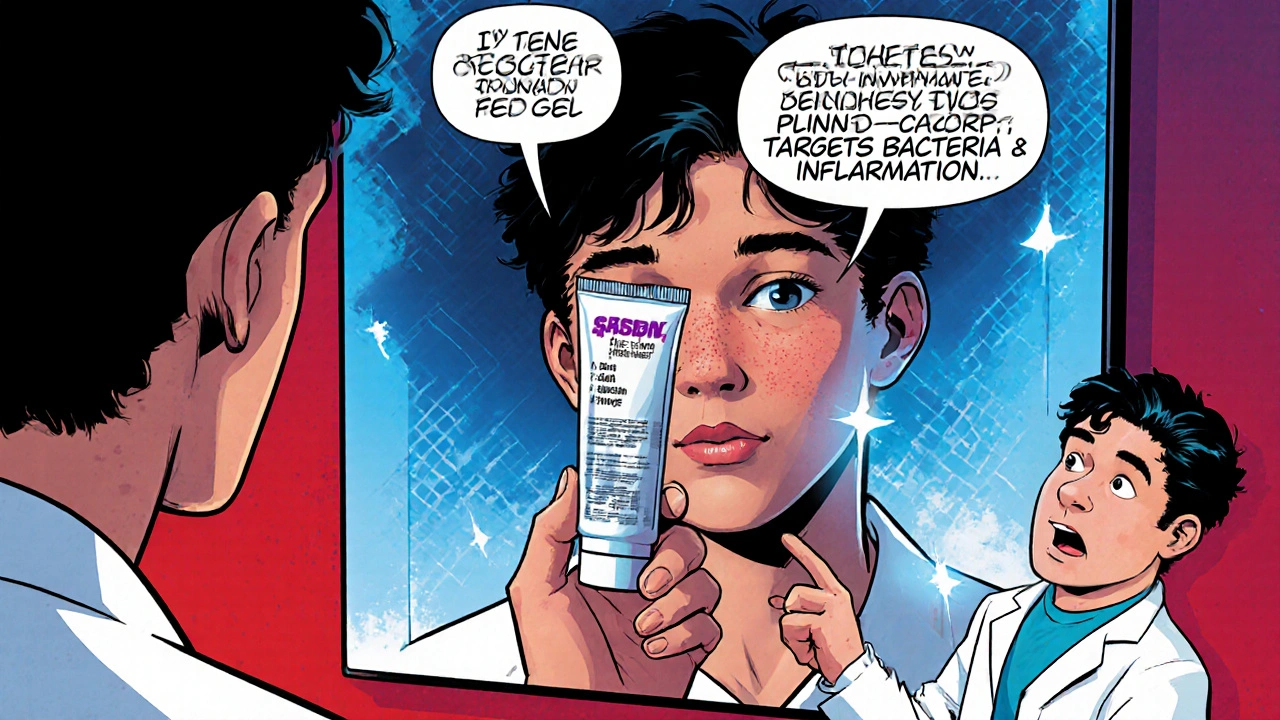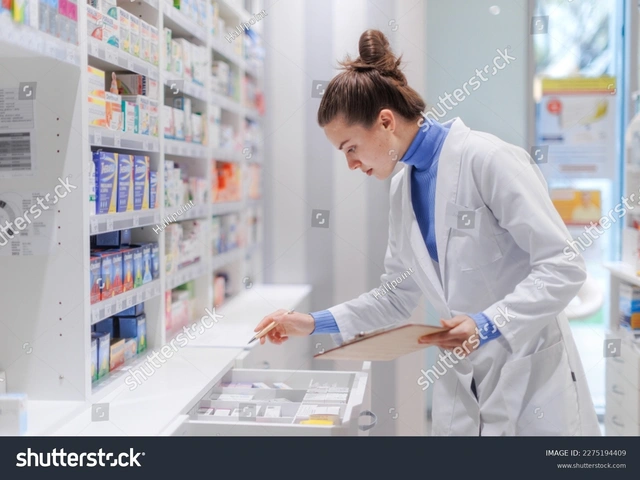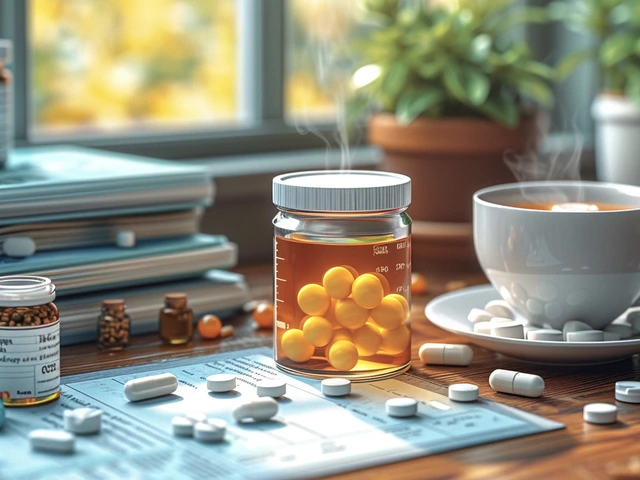Acne Treatment Recommender
Find Your Best Acne Treatment
Key Takeaways
- Cleocin Gel (Clindamycin) is a prescription antibiotic that fights acne‑causing bacteria and inflammation.
- Alternative topicals include mupirocin, adapalene, benzoyl peroxide, azelaic acid, erythromycin, tretinoin, and salicylic acid.
- Prescription options tend to be stronger but may need a doctor’s approval; OTC choices are cheaper and easier to access.
- Choose based on skin type, severity of acne, tolerance for irritation, and budget.
- Proper application and sun protection are crucial for all treatments.
When tackling acne, Cleocin Gel (Clindamycin) is a prescription‑only topical antibiotic that targets the bacteria Propionibacterium acnes and reduces inflammation. It comes in a 1% gel and is typically applied twice daily after cleaning the skin. Cleocin works by inhibiting bacterial protein synthesis, which slows the growth of the acne‑causing microbes. Because it’s an antibiotic, clinicians recommend using it for a limited period-usually 6‑12 weeks-to avoid resistance.
One of the biggest questions is whether Cleocin Gel is worth the prescription hassle when several over‑the‑counter (OTC) alternatives exist. Below we break down the most common competitors, compare key attributes, and help you decide which formula fits your skin and lifestyle best.
How Cleocin Gel Works
The active ingredient, clindamycin, binds to the 50S subunit of bacterial ribosomes. This stops the bacteria from making proteins they need to survive. In acne, the reduction of P. acnes also means less inflammation, redness, and the formation of papules or pustules. Cleocin Gel is often paired with benzoyl peroxide or a retinoid to enhance effectiveness and prevent antibiotic resistance.
What to Look for When Comparing Acne Topicals
Before you dive into a side‑by‑side table, consider these decision factors:
- Prescription vs. OTC: Prescription products (Cleocin, Bactroban, tretinoin) usually need a doctor’s evaluation and can be stronger.
- Mechanism of action: Antibiotics kill bacteria, retinoids normalize skin cell turnover, peroxide oxidizes bacteria, acids exfoliate.
- Skin tolerance: Some users experience dryness, peeling, or burning. Start with a low concentration if you have sensitive skin.
- Cost & insurance: Prescription gels can range from $30‑$80, while OTC gels often sit under $20.
- Frequency of use: Twice‑daily (Cleocin) vs. once‑daily or every other day (some retinoids).
Side‑by‑Side Comparison of Popular Alternatives
| Product | Active Ingredient | Prescription? | Primary Mechanism | Typical Use | Pros | Cons | 2025 US Price |
|---|---|---|---|---|---|---|---|
| Cleocin Gel | Clindamycin 1% | Yes | Antibiotic (protein synthesis inhibition) | Twice daily | Targets bacteria & inflammation; good for moderate acne | Potential resistance; may cause dryness | $45‑$75 (insurance may cover) |
| Bactroban | Mupirocin 2% | Yes | Antibiotic (cell wall synthesis inhibition) | Twice daily | Effective against MRSA‑type skin bacteria; low irritation | Not FDA‑approved for acne; prescription cost | $35‑$60 |
| Differin Gel | Adapalene 0.1% or 0.3% | No (OTC) | Retinoid (cell turnover) | Once nightly | Reduces comedones; good for oily skin | Initial dryness, possible purging | $12‑$18 |
| Benzoyl Peroxide Gel | Benzoyl Peroxide 5% | No | Oxidizing antibacterial | Once or twice daily | Fast‑acting; reduces bacteria quickly | Can bleach fabrics; may cause irritation | $8‑$15 |
| Azelaic Acid Gel | Azelaic Acid 15% | No | Anti‑inflammatory & keratolytic | Twice daily | Reduces redness; safe for sensitive skin | Gradual results; pricier OTC | $20‑$30 |
| Erythromycin Gel | Erythromycin 2% | Yes | Antibiotic (protein synthesis inhibition) | Twice daily | Good for inflammatory lesions | Resistance risk; may cause itching | $30‑$55 |
| Tretinoin Cream | Tretinoin 0.025%‑0.05% | Yes | Retinoid (cell turnover) | Once nightly | Highly effective for severe acne | Significant irritation; requires dermatologist monitoring | $25‑$45 |
| Salicylic Acid Gel | Salicylic Acid 2% | No | Keratolytic (exfoliates pores) | Once daily | Clears blackheads; gentle | May not control inflammatory acne alone | $7‑$12 |
Pros and Cons of Each Option
Cleocin Gel shines when you need a targeted antibacterial that also cuts inflammation. It works fast, but the need for a prescription can be a hurdle.
Bactroban offers a low‑irritation alternative, yet it isn’t officially indicated for acne, limiting insurance coverage.
Differin Gel (adapalene) is a favorite for oily or combo skin because it prevents clogged pores without a prescription. The downside? Some users experience an initial “purge” as dead cells surface.
Benzoyl Peroxide Gel clears bacteria within days, but its drying power can be harsh on dry or sensitive skin and it can bleach your clothes.
Azelaic Acid Gel is gentle, reduces redness, and even helps with rosacea. It’s pricier and works more slowly than peroxide.
Erythromycin Gel is another prescription antibiotic, but resistance is a growing concern, so doctors often pair it with peroxide.
Tretinoin Cream delivers the most dramatic results for severe acne, yet it can cause severe peeling and requires careful sun protection.
Salicylic Acid Gel is a mild exfoliant that’s perfect for occasional breakouts, but on its own it rarely clears inflamed lesions.
Who Should Choose Which Treatment
- Prescription‑only, moderate inflammatory acne: Cleocin Gel or Erythromycin Gel, preferably combined with benzoyl peroxide.
- OTC, oily or comedonal acne: Differin Gel, Salicylic Acid Gel, or Benzoyl Peroxide Gel.
- Sensitive skin with redness: Azelaic Acid Gel or low‑strength clindamycin (if prescribed).
- Severe cystic acne: Tretinoin Cream plus a prescription antibiotic.
- Budget‑conscious shoppers: Benzoyl peroxide or salicylic acid; they’re under $20.
How to Use Cleocin Gel Safely
- Cleanse with a gentle, non‑scrubbing cleanser; pat dry.
- Apply a pea‑sized amount to each affected area twice daily, usually morning and night.
- Allow the gel to absorb for 5‑10 minutes before applying moisturizer.
- Use a non‑comedogenic sunscreen (SPF 30+) every morning; clindamycin can increase photosensitivity.
- Follow up with a dermatologist after 6‑8 weeks to assess response and decide whether to continue or switch.

Potential Side Effects & What to Watch For
Most users tolerate Cleocin Gel well, but common complaints include mild dryness, peeling, or a transient burning sensation. If you notice severe redness, swelling, or signs of an allergic reaction (hives, swelling of lips or face), stop the product and contact a healthcare provider immediately.
When to Combine Treatments
Because antibiotic resistance can develop, doctors often pair Cleocin Gel with benzoyl peroxide. The peroxide kills bacteria by oxidation, which reduces the load on the antibiotic. A typical regimen looks like:
- Morning: Clean, apply benzoyl peroxide, wait 5 minutes, then moisturize.
- Evening: Clean, apply Cleocin Gel, then moisturizer.
Never layer two strong exfoliants (e.g., adapalene + benzoyl peroxide) without professional guidance, as this can cause severe irritation.
Frequently Asked Questions
Can I use Cleocin Gel without a prescription?
No. In the United States, Cleocin Gel is a prescription‑only medication. You’ll need a doctor’s order, which you can often obtain via a tele‑dermatology visit.
How long does it take to see results?
Most patients notice reduced redness and fewer new pustules within 2‑3 weeks, but full clearance can take 2‑3 months.
Is it safe to use Cleocin Gel during pregnancy?
Clindamycin is classified as Pregnancy Category B, meaning animal studies show no risk, but there are limited human data. Always discuss with your OB‑GYN before starting.
Can I mix Cleocin Gel with other acne products?
Yes, but pair it with non‑irritating moisturizers. Combining with another prescription antibiotic isn’t recommended. If you want a retinoid, use it at night on alternate days.
What should I do if I miss a dose?
Apply the missed dose as soon as you remember, unless it’s close to the next scheduled application. In that case, skip the missed dose and continue with your regular routine.
At the end of the day, the “best” acne solution is the one that fits your skin type, severity, budget, and willingness to see a doctor. Whether you opt for Cleocin Gel or an OTC alternative, consistency and patience are the real game‑changers.





Kimberly Newell - 15 October 2025
Hey folks! If you'r trying Cleocin, start with a teeny bit and always slap on a good moisturizer after. It helps keep that dry, flaky feeling at bay and your skin will thank u later. Also, don’t forget sunscreen – clindamycin can make you a little more sun‑sensitive, so SPF 30+ is a must.
Drew Burgy - 18 October 2025
Look, the pharma giants don’t want you to know that a cheap benzoyl peroxide can do the job just as well. Cleocin’s just a marketing ploy to keep you paying for a prescription while the “big pharma” lobby pushes out cheaper OTC stuff. So, if you want to save some cash, just grab a 5% peroxide and skip the ‘expert’ doctor appointment.
Andrea Mathias - 20 October 2025
Patriotic Americans, listen up! Our great nation deserves skin that shines like liberty itself. Forget those foreign‑made creams and grab Cleocin – it’s made right here, cutting through acne the way we cut through tyranny. If you’re not using it, you’re practically sabotaging the red‑white‑blue complexion of our homeland.
TRICIA TUCKER - 23 October 2025
Quick grammar tip: when you write about “Cleocin Gel,” don’t forget the capital “C” and the word “Gel” is a proper noun. Also, remember to keep your sentences concise – long ramblings can lose folks’ attention. Keep it friendly, keep it clear, and your acne advice will be as smooth as your skin after treatment.
Dave Tu - 25 October 2025
While the article covers many options, it overlooks the fact that antibiotic resistance is a genuine concern. The author’s endorsement of pairing Cleocin with benzoyl peroxide is prudent, yet they fail to emphasize monitoring for microbial resistance over prolonged use, which could diminish efficacy across the board.
Johnna Sutton - 28 October 2025
With all due respect to the preceding assertion, the United States has historically championed rigorous antimicrobial stewardship programs; however, it appears that many clinicians neglect to inform patients adequately about resistance issues. This oversight, albeit unintentional, could undermine public health initiatives that are foundational to our nation’s medical excellence.
Vinay Keragodi - 30 October 2025
I find it interesting how the article breaks down each product’s mechanism. For someone like me who’s not a dermatologist, understanding that clindamycin targets bacterial protein synthesis while adapalene boosts cell turnover really helps in making a decision. Also, the price range chart is handy for budgeting.
Anil Karwal - 2 November 2025
Good point on the mechanisms. I’d add that trying a low‑strength product first can reduce the risk of irritation, especially if you have sensitive skin. It’s a practical approach before jumping straight into prescription‑only options.
Namit Kumar - 4 November 2025
Honestly, if you’re aiming for long‑term results, pairing a topical antibiotic like Cleocin with a non‑irritating retinoid is the gold standard. 🙂 Just remember to monitor for any excessive dryness and keep the skin barrier intact.
Sam Rail - 6 November 2025
Sounds solid. I’ll probably stick with the cheaper peroxide for now and see how it goes.
Taryn Thompson - 9 November 2025
From a clinical perspective, the most reliable regimen for moderate inflammatory acne typically involves a combination therapy: a topical antibiotic such as clindamycin, an antibacterial like benzoyl peroxide, and a retinoid for comedonal control. This multi‑pronged approach addresses bacterial load, inflammation, and follicular hyperkeratinization concurrently, thereby optimizing outcomes while mitigating resistance.
Lisa Lower - 11 November 2025
Alright everyone gather round because I’m about to drop some truth bombs on this whole Cleocin vs. OTC saga. First off, the idea that you need a prescription for anything that works is pure marketing hype designed to keep the pharmaceutical industry’s cash flow humming like a well‑oil’d engine. Second, the mechanism of clindamycin – it basically tells the acne‑causing bacteria to pack up and go home by halting their protein production, which is great but only if you don’t overuse it and turn your skin into a resistant wasteland. Third, the real MVPs in the acne world are the ones that give you both the bacterial kill and the exfoliation boost without burning your face off – think benzoyl peroxide at 5% paired with a gentle retinoid like adapalene. Fourth, cost matters; paying $60 for a gel that you’ll have to stop using after a few months because of resistance is stupid when a $10 peroxide does the job just as fast. Fifth, sun protection is non‑negotiable – whether you’re on a prescription or an over‑the‑counter product, the UV rays will love your exfoliated skin and turn a mild irritation into a full‑blown burn. Sixth, the table in the article is a nice visual but it forgets to mention that many people experience a “purge” phase with retinoids, which can be alarming if you’re not prepared. Seventh, compliance is king – if you’re too busy to apply a product twice a day, you’ll never see results, period. Eighth, for those with sensitive skin, azelaic acid at 15% is a gentle yet effective alternative that also helps with rosacea and hyperpigmentation. Ninth, the combination therapy approach is not just a suggestion, it’s a protocol that dermatologists have been following for decades, and it works because it attacks acne on three fronts. Tenth, don’t forget moisturizers – a non‑comedogenic, barrier‑repairing moisturizer can make or break your regimen. Eleventh, remember to give any new product at least six weeks before judging its efficacy; acne isn’t a sprint, it’s a marathon. Twelfth, if you do decide to go prescription, ask your dermatologist about the possibility of cycling the antibiotic to reduce resistance risk. Thirteenth, keep a skin journal – note down what you use, when you use it, and how your skin reacts, it’s invaluable for tweaking the regimen. Fourteenth, stay away from “miracle” products that promise overnight clearing; they’re usually loaded with irritants and can worsen inflammation. Fifteenth, finally, patience and consistency are the real secret weapons – no matter how fancy the product, you won’t see clear skin without sticking to the routine.
Dana Sellers - 14 November 2025
Honestly, the whole “just keep applying” thing is the only thing that matters. If you’re not consistent, you’re just wasting money and time.
Damon Farnham - 16 November 2025
One must not overlook the epistemological ramifications of relying solely upon topical antibiotics; such reliance, whilst ostensibly efficacious, may engender a pernicious complacency within the dermatological paradigm, thereby precipitating a cascade of antimicrobial resilience that could, in the grander schema, compromise public health metrics; thus, a judicious integration of adjunctive modalities is imperative, lest we devolve into a myopic fixation on singular therapeutic vectors.
Gary Tynes - 19 November 2025
Totally get your point about the bigger picture and the need for balance in treatment plans, especially when we want sustainable results without creating new problems down the road.
Marsha Saminathan - 21 November 2025
Bottom line: consistency wins.